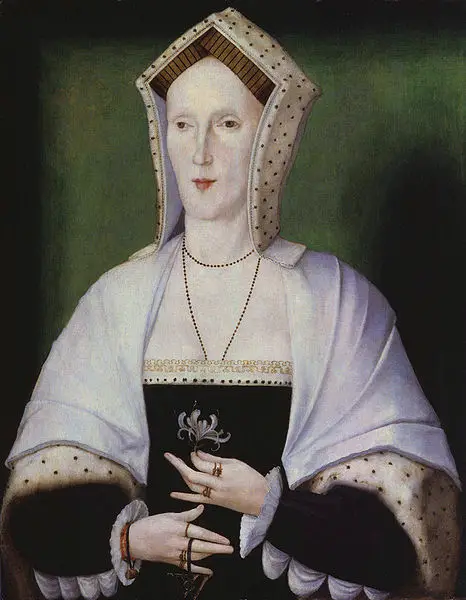Chronicler and Windsor Herald Charles Wriothesley recorded:
Fryday, the 22 of January 1552, Edward Seimer, Duke of Somersett, was beheaded at Tower Hill, afore ix of the clocke in the forenone, which tooke his death very patiently, but there was such a feare and disturbance amonge the people sodainely before he suffred, that some tombled downe the ditch, and some ranne toward the houses thereby and fell, that it was marveile to see and hear; but howe the cause was, God knoweth.
A note on that page of the Chronicle states that "Edward VI appears to have been perfectly convinced of his uncle's guilt, and in that conviction to have given himself no further concern about the duke, only noting in his diary that ‘the Duke of Somerset had his head cut off upon Tower Hill between eight and nine o’clock in the morning.’"
Edward Seymour was the second uncle that Edward had lost in such a brutal manner; his brother, Thomas, had been executed for treason on the 20th March 1549.
Somerset had become Lord Protector of England in February 1547, shortly after Henry VIII's death. Henry VIII's will had named sixteen executors who were to form a regency council, along with twelve other advisers, until Edward VI came of age, so Edward Seymour (then Earl of Hertford) had not been appointed Lord Protector by Henry VIII. The plan was that the council would rule collectively with every member having equal power and rights. However, the will also allowed the executors to grant themselves lands and honours, so Somerset took advantage of this and made himself Duke of Somerset and Lord Protector of his nephew’s council, with the agreement of 13 out of the 16 executors. Somerset then went on to rule by proclamation, making all of the decisions himself.
Somerset's downfall was the result of widespread social unrest in England, such as the Prayer Book Rebellion in the South West in 1549, something which the rest of the council blamed him for. Somerset was arrested on 11 October 1549 and brought in front of Edward VI who summarised his charges as "ambition, vainglory, entering into rash wars in mine youth, negligent looking on Newhaven, enriching himself of my treasure, following his own opinion, and doing all by his own authority, etc." He was succeeded as the leader of Edward VI's council by John Dudley, Earl of Warwick, and although he was later released and restored to a place on the council, Somerset was eventually executed on the 22 January 1552 after plotting to overthrow Dudley. He was buried at the Chapel of St Peter ad Vincula at the Tower of London.
Also on this day in history...
- 1554 - Thomas Wyatt the Younger met with fellow conspirators at his home of Allington Castle in Kent to make final plans for their uprising against Mary I and her decision to marry Philip of Spain.. See www.tudorsociety.com/wyatts-rebellion-1554/ for more details.
Notes and Sources
- A Chronicle of England during the reigns of the Tudors, from A.D. 1485 to 1559, Charles Wriothesley, printed for the Camden Society, p65-66




I think this portrait is Thomas Seymour?
Ooops, thanks for spotting that! Wrong Seymour! At least I didn’t put Jane lol!
Edit: Just double-checked and it’s definitely Edward. Thomas Seymour can be seen at https://www.tudorsociety.com/thomas-seymour-1st-baron-seymour-sudeley/